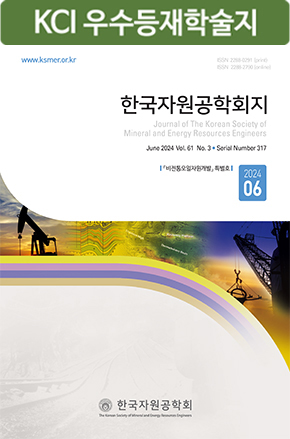Research Paper
- Ahn, S., Wang, K.S., Shuler, P.J., Creek, J.L. and Tang, Y., 2005, “Paraffin Crystal and Deposition Control By Emulsification,” paper SPE 93357 presented at the SPE International Symposium on Oilfield Chemistry held in Houston, U.S.A., Feb. 2-4.
- Allan, K.J., Wylde, J.J., Slayer, J.L. and Abbate, M., 2010, “Successful Application of LDHI and Paraffin Inhibitor Provides a Step Change in Flow Assurance Management in a Subsea Network in the Gulf of Mexico,” paper SPE 133406 presented at the Trinidad and Tobago Energy Resources Conference held in Port of Spain, Trinidad, June 27-30.
- ASTM, 2012, “D6749 Standard Test Method for Pour Point of Petroleum Products,” Book of standards volume, Vol. 05.03.
- Bacon, M.M. and Romero-Zerŏn, L.B., 2011, “Optimizing Paraffin and Naphthene Wax-Treatment Options Using Cross-Polarized Microscopy,” paper SPE 140838 presented at the SPE International Symposium on Oilfield Chemistry held in Woodlands, U.S.A., Apr. 11-13.
- Bai, Y. and Bai, Q., 2005, Subsea Pipelines and Risers, 2nd Ed., Elsevier Science Publishers, Amsterdam, Netherlands, pp. 389-392.
- Bailey, J.C. and Allenson, S.J., 2009, “Paraffin Cleanout in a Single Subsea Flowline Using Xylene,” paper OTC 19566 presented at the Offshore Technology Conference, Houston, U.S.A., May 5-8.
- Becker, J.R., 2000, “Oilfield Paraffin Treatments : Hot Oil and Hot Water Compared to Crystal Modifiers,” paper SPE 63123 presented at the SPE Annual Technical Conference and Exhibition held in Dallas, U.S.A., Oct. 1-4.
- Bucaram, S.M., 1966, “An Improved Paraffin Inhibitor,” paper SPE 1544 presented at the SPE 41st Annual Fall Meeting held in Dallas, U.S.A., Oct. 2-5.
- Charles, J.G. and Marcinew, R.P., 1986, “Unique Paraffin Inhibition Technique Reduces Well Maintenance,” J. of Canadian Petroleum Technology, Vol. 25, No. 4, pp. 40-44.
- Chen, W., Zhao, Z. and Yin, C., 2010, “The Interaction of Waxes with Pour Point Depressants,“ Fuel, Vol. 89, No. 5, pp. 1127-1132.
- Dobbs, J.B., 1999, “A Unique Method of Paraffin Control in Production Operations,” paper SPE 55647 presented at the SPE Rocky Mountain Regional Meeting held in Gillette, U.S.A., May 15-18.
- Frenier, W.W., Ziauddin, M. and Venkatesan, R., 2010, Organic Deposits in Oil and Gas Production, SPE, Richardson, U.S.A.
- Jennings, D.W. and Newberry, M.E., 2008, “Application of Paraffin Inhibitor Treatment Programs in Offshore Developments,” paper OTC 19154 presented at the Offshore Technology Conference held in Houston, U.S.A., May 5-8.
- Joseph, P.W. and Eugene, S., 2009, “Methacrylate Copolymer Pour Point Depressants,” European Patent Specification, Patent No. 07821949.0.
- Kulkarni, M.M. and Iyer, K., 2005, “Effects of Pour-point Depressants on Indian Crude Oils,” paper SPE 95976 presented at the SPE Annual Technical Conference and Exhibition held in Dallas, U.S.A., Oct. 9-12.
- Kang, P.S., Yu, S.R. and Lim, J.S., 2012, “Experimental Research on Characteristics of Wax Deposition,” Proc. of the 2012 Korean Society for Energy Engineering, KOSEE, Busan, Korea, p. 107.
- Lee, J.H., Park, S.S., Joo, W.S., Shin, C.H. and Lee, Y.S., 2009, “Potentialities and Value of Gas Hydrate as an Energy Resource,” J. of the Korean Society for Geosystem Engineering, Vol. 46, No. 4, pp. 490-497.
- Lim, J.S., 2010, “Flow Assurance Technology in Petroleum Production System,” J. of Petroleum, Vol. 26, pp. 68-85.
- Lim, J.S., Back, S.Y., Kang, P.S., Yu, S.R., Kim, H.S. and Park, J.H., 2012, “Wax Appearance Temperature Measurement of Opaque Oil for Flow Assurance in Subsea Petroleum Production System,” J. of the Korean Society of Marine Engineering, Vol. 36, No. 1, pp. 185-194.
- Lim, J.S., Kang, P.S. and Yu, S.R., 2013, “Flow Assurance Technologies for Mitigating Wax Deposition in Subsea Petroleum Production System,” J. of the Korean Society of Mineral and Energy Resources Engineers, Vol. 50, No. 2, pp. 278-296.
- Manka, J.S., Magyar, J.S. and Smith, R.P., 1999, “A Novel Method to Winterize Traditional Pour Point Depressants,” paper SPE 56571 presented at the SPE Annual Technical Conference and Exhibition held in Houston, U.S.A., Oct. 3-6.
- Newberry, M.E. and Barker, K.M., 1985, “Formation Damage Prevention Through the Control of Paraffin and Asphaltene Deposition,” paper SPE 13796 presented at the SPE Production Operations Symposium held in Oklahoma City, U.S.A., Mar. 10-12.
- Peyton, K.B. and Wang, S.L., 2001, “Composition and Method for Lubricant Wax Dispersant and Pour Point Improver,” United States Patent, Patent No. 6,174,843 B1.
- Poole, G., Brock, G., Szymczak, S. and Casey, G., 2008, “Successful Pipeline Clean Out-Lessons Learned From Cleaning Paraffin Blockage From a Deepwater Pipeline,” paper SPE 115658 presented at the SPE Annual Technical Conference and Exhibition held in Denver, U.S.A., Sep. 21-24.
- Rønningsen, H.P., Bjørndal, B., Hansen, A.B. and Pedersen, W.B., 1991, “Wax Precipitation from North Sea Crude Oils. 1. Crystallization and Dissolution Temperature, Newtonian and Non-newtonian Flow Properties,” Energy & Fuels, Vol. 5, pp. 895-908.
- Straub, T.J., Autry, S.W. and King, G.E., 1989, “An Investigation Into Practical Removal of Downhole Paraffin by Thermal Methods and Chemical Solvents,” paper SPE 18889 presented at the SPE Production Operations Symposium held in Oklahoma City, U.S.A., Mar. 13-14.
- Tung, N.P., Phong, N.T.P., Long, B.Q.K., Thuc, P.D. and Son, T.C., 2001, “Studying the Mechanisms of Crude Oil Pour Point and Viscosity Reductions When Developing Chemical Additives With Use of Advanced Analytical Tools,” paper SPE 65204 presented at the SPE International Symposium on Oilfield Chemistry held in Houston, U.S.A., Feb. 13-16.
- Venkatesan, R., Singh, P. and Fogler, H.S., 2002, “Delineating the Pour Point and Gelation Temperature of Waxy Crude Oils,” SPE J., Vol. 7, No. 4, pp. 349-352.
- Wylde, J.J. and Slayer, J.L., 2012, “Considerations and Lessons Learned on Development of Gas-Lift Paraffin Inhibitors of Subsea Wells in the Gulf of Mexico,” paper OTC 23206 presented at the Offshore Technology Conference held in Houston, U.S.A., Apr. 30-May 3.
- Yoo, J.H., Park, C.H. and Kim, H.T., 2011, “Utilization of Nanotechnology in Enhanced Oil Recovery,” J. of the Korean Society for Geosystem Engineering, Vol. 48, No. 6, pp. 794-801.
- Zhang, F. and Wang, B., 1995, “Development of a Complex Type of Pour Point-Viscosity Depressant and Infrared Spectrum Research,” paper SPE 29011 presented at the SPE International Symposium on Oilfield Chemistry held in San Antonio, U.S.A., Feb. 14-17.
- Publisher :The Korean Society of Mineral and Energy Resources Engineers
- Publisher(Ko) :한국자원공학회
- Journal Title :Journal of the Korean Society of Mineral and Energy Resources Engineers
- Journal Title(Ko) :한국자원공학회지
- Volume : 50
- No :5
- Pages :631-640
- DOI :https://doi.org/10.32390/ksmer.2013.50.5.631



 Journal of the Korean Society of Mineral and Energy Resources Engineers
Journal of the Korean Society of Mineral and Energy Resources Engineers








